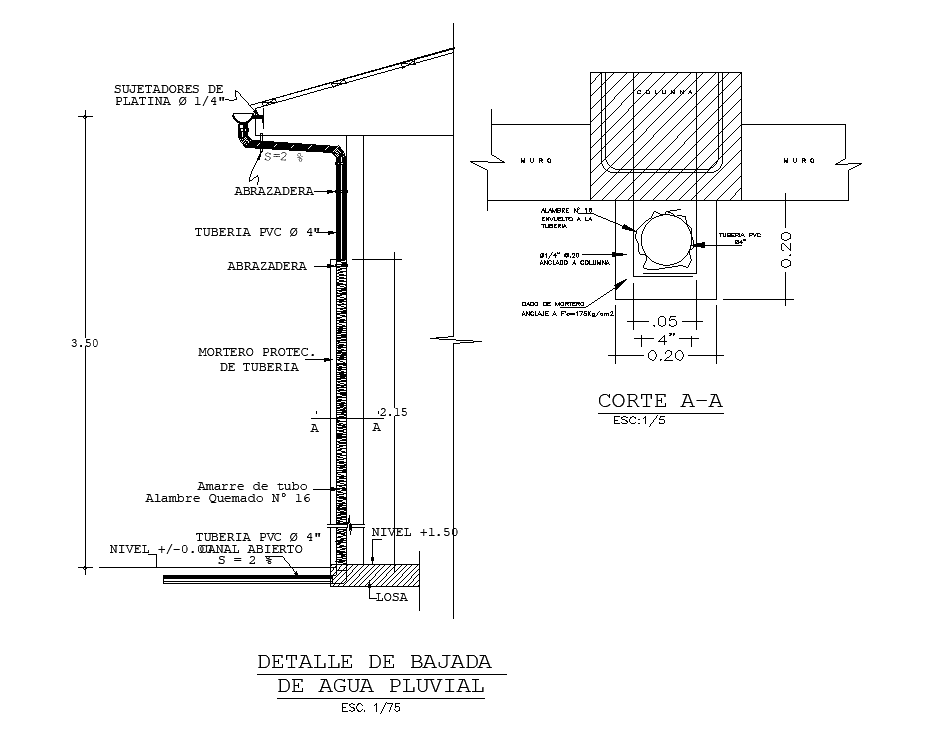

Incorporating too high a safety factor can result in an over-sized system that won’t operate as a siphon system for almost all rainfall events. Historic data must be considered, as well as a safety factor, to accommodate abnormal heavy rainfall events which can result in roof flooding if water doesn’t drain fast enough. The design of the siphon roof drainage system is largely determined by the rainfall intensity rate of the area. Illustration: Baffle Plate on the roof drainage outlet
#Water cad roof drainage syphon full
Pipe diameter is decreased to ensure full bore flow which is necessary to create the suction state. The vertical downpipe can be installed in the desired location (near the end of the building), which reduces the use of expensive underground drains to transport discharged water.Īnother feature of the siphon based system is the decreased pipe diameter when compared to an equivalent gravity drainage system. The horizontal section can be run very close to the roof, reducing both the amount of space used for pipe work and impact on building aesthetics. In a siphon based system, the horizontal section of pipe connecting multiple roof outlets does not require a gradient for the flow of water since water flow is dictated by the suction in the pipe. The baffle also functions to prevent the formation of vortices (which can suck in air) in the drainage outlets. This in turn pulls down more water rapidly and increases the flow velocity. When the entire pipe is filled with water, the column of water in the vertical downpipe falls, forming a zone of negative pressure in the horizontal pipe, which creates a state of suction. In a siphon drainage system, baffle plates installed in the mouth of the roof outlets prevent air from entering the pipe. This reduces operational efficiency and water flow velocity. Consequently, not all of the pipe bore is used for water flow. A conventional gravity based system permits water and air to enter roof drainage outlets, where they move into the vertical downpipes.

They differ from conventional gravity based systems in that they don’t allow air to get into the drainage outlets installed in the roof tops. Siphon drainage systems were first developed in Europe in the late 1960s. System principles and how it differs from a conventional gravity based system They work on the principle of suction or siphoning – similar to liquid rising when sucking on a straw. Siphon roof drainage systems serve as an alternative to conventional gravity based roof drainage systems.


 0 kommentar(er)
0 kommentar(er)
